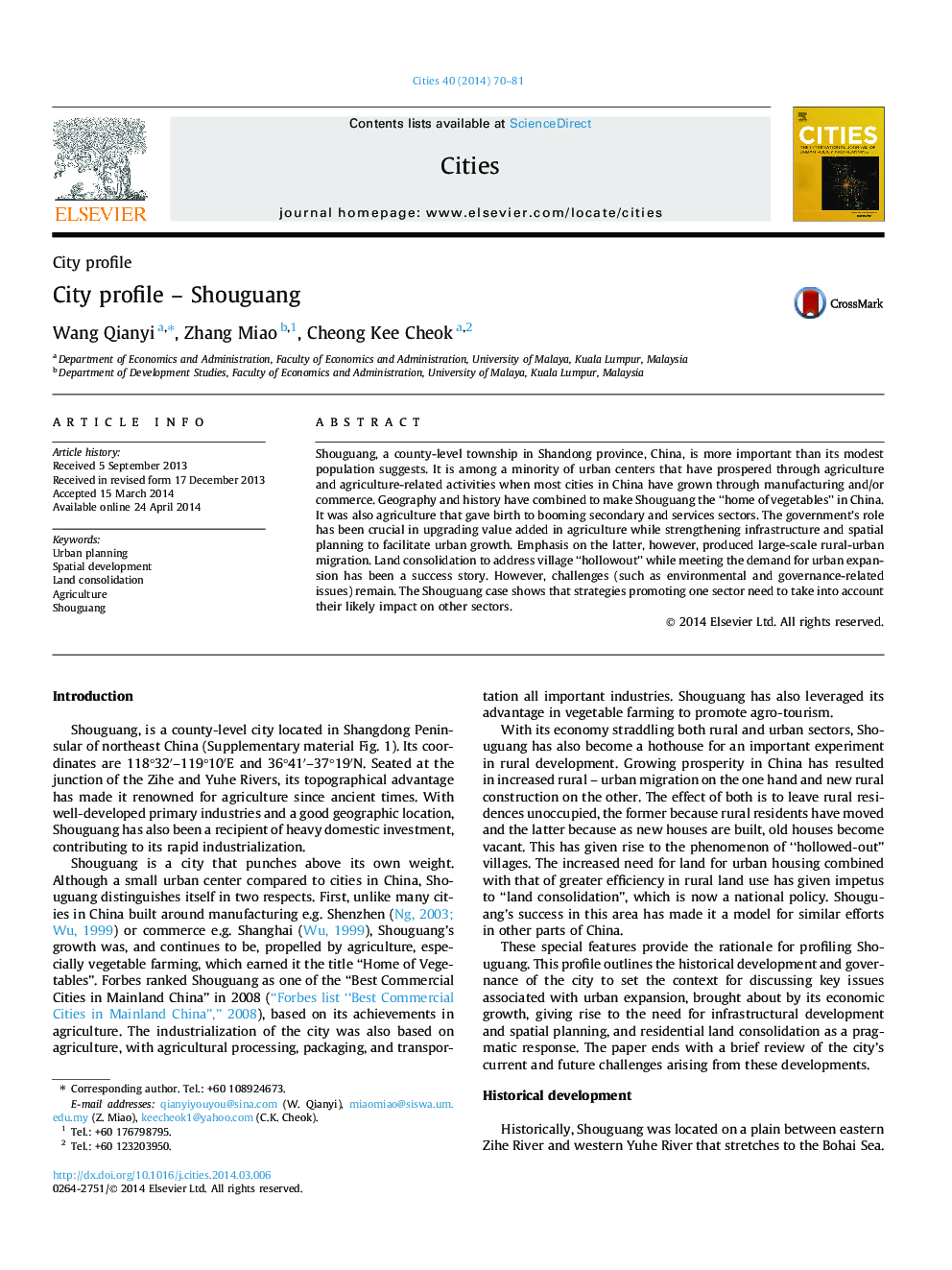| Article ID | Journal | Published Year | Pages | File Type |
|---|---|---|---|---|
| 1008360 | Cities | 2014 | 12 Pages |
•Shouguang stands out as a successful model of growth through agriculture.•It has the potential to achieve balanced growth through agricultural and urban development.•Existing policies favoring urban development have fueled rural-urban migration.•The government has successfully responded through land consolidation, which can also be a model for other cities.•But challenges remain to be addressed.
Shouguang, a county-level township in Shandong province, China, is more important than its modest population suggests. It is among a minority of urban centers that have prospered through agriculture and agriculture-related activities when most cities in China have grown through manufacturing and/or commerce. Geography and history have combined to make Shouguang the “home of vegetables” in China. It was also agriculture that gave birth to booming secondary and services sectors. The government’s role has been crucial in upgrading value added in agriculture while strengthening infrastructure and spatial planning to facilitate urban growth. Emphasis on the latter, however, produced large-scale rural-urban migration. Land consolidation to address village “hollowout” while meeting the demand for urban expansion has been a success story. However, challenges (such as environmental and governance-related issues) remain. The Shouguang case shows that strategies promoting one sector need to take into account their likely impact on other sectors.
